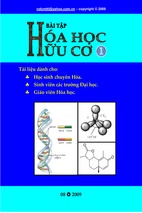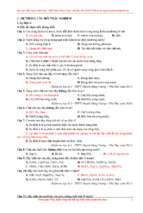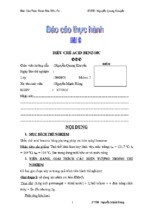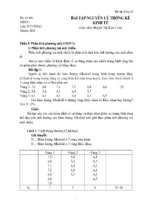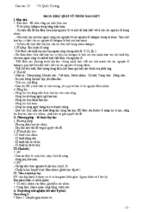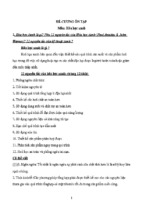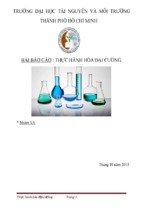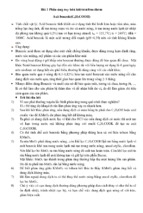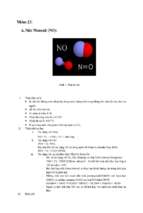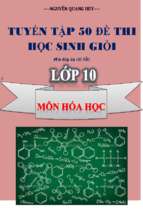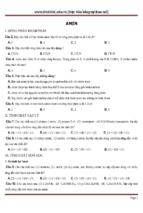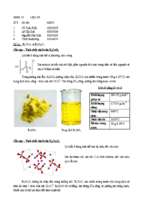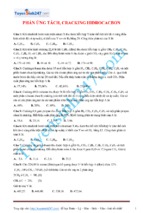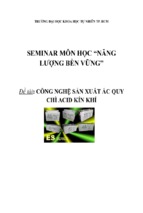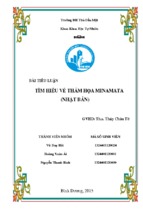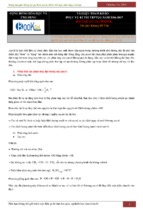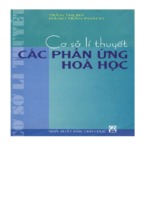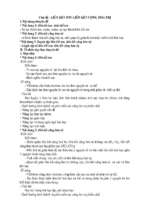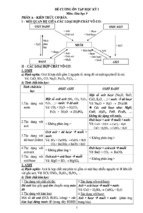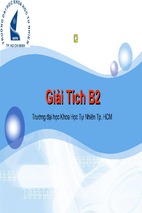Structural
Inorganic
Chemistry
A.F. WELLS
CLARENDON PRESS - OXFORD
Oxford University Press
Ely House, London W1
1975
4th Edition
Fsfsdf
Oxford University Press, Ely House, London W.1
GLASGOW
NEW YORK
CAPE TOWN
DELHl
IBADAN
BOMBAY
KUALA LUMPUR
TORONTO
NAIROBI
MELBOURNE
DAR ES SALAAM
CALCUTTA
MADRAS
KARACHI
SINGAPORE
HONG KONG
WELLINGTON
LUSAKA
ADDIS ABABA
LAHORE
DACCA
TOKYO
I S B N 0 19 8 5 5 3 5 4 4
0 O X F O R D UNIVERSITY PRESS 1975
All rights reserved. No part of this publication may be reproduced,
storedin a retrieval system, or transmitted, in any form or by any means,
electronic, mechanical, photocopying, recording or otherwise, without
the prior permission of' Oxford University Press
PRINTED IN GREAT BRITAIN BY
WILLIAM C L O W E S & S O N S L I M I T E D
LONDON, COLCHESTER AND BECCLES
Fsfsdf
Preface
This book has been almosl entirely rewritten, but its purpose and general
organization remain the same las those of previous editions. The Introduction t o the
first (1945) edition included dhe following paragraph: 'The reasons for writing this
book were, firstly, the conviqtion that the structural side of inorganic chemistry
cannot be put on a sound basls until the knowledge gained from the study of the
solid state has been incorporated into chemistry as an integral part of that subject,
and secondly, the equally strolng conviction that it is unsatisfactory merely to add
information about the structures of solids to the descriptions of the elements and
compounds as usually presented in a systematic treatment of inorganic chemistry.'
Now, after a period of thirty years during which considerable advances have been
made in solid state chemistry, it is still true to say that the structures and properties
of solids receive very little atte~ntionin most treatments of inorganic chemistry, and
this in spite of the fact that most elements and most inorganic compounds are
solids at ordinary temperaturw. This state of affairs would seem to be sufficient
justification for the appearance of yet another edition of this book.
Since the results of structurkl studies of crystals are described in crystallographic
language the first requirement is that these results be made available in a form
intelligible to chemists. It was this challenge that first attracted the author, and it is
hoped that this book will continue to provide teachers of chemistry with facts and
ideas which can be incorporated into their teaching. However, while any addition of
structural information to the donventional teaching of inorganic chemistry is to be
welcomed the real need is a radical change of outlook and the recognition that not
only is the structure of a substance in all states of aggregation an essential part of its
full description (or characterization) but also that the structures and properties of
solids form an integral part, pedhaps the major part, of the subject.
The general plan of the boqk is as follows. Part I deals with a number of general
topics and is intended as an introduction to the more detailed Part 11, which forms
the larger part of the book. In Part I1 the structural chemistry of the elements is
described systematically, and the arrangement of material is based on the groups of
the Periodic Table. The advanlces made during the past decade have necessitated
considerable changes in these latter chapters, but the major structural changes have
been made in the content of Part I.
Since a concise treatment of certain geometrical and topological topics is not
readily available elsewhere mode space has been devoted to these than in previous
editions at the expense of subjects such as the experimental methods of structural
chemistry, which at best can receive only a sketchy treatment in a volume such as
Preface
this. Many students find difficulty in appreciating the three-dimensional geometry
of crystal structures from two-dimensional illustrations (even stereoscopic photographs). In order to acquire some facility in visualising the three-dimensional
arrangements of atoms in crystals some acquaintance is necessary with symmetry,
repeating patterns, sphere-packings, and related topics. Some of this material could
be, and sometimes is, introduced into teaching at an early age. However, there is a
tendency in some quarters to regard solid geometry as old-fashioned and to replace
it in school curricula by more fashionable aspects of mathematics. This adds to the
difficulties of those teachers of chemistry who wish to modernize their teaching by
including information about the structures of solids. Unless the student has an
adequate grounding in the topics noted above little is gained by adding diagrams of
unit cells of crystal structures to conventional chemistry texts.
The educational value of building models representing the arrangements of
atoms in crystals cannot be over-emphasized; and by this we mean that the student
actually assembles the model and does not simply look at a ready-made model,
however much more elegant the latter may be. Some very tentative suggestions for
model building have been offered in the author's Models in Structural Inorganic
Chemistry, to which the abbreviation MSIC in the present volume refers.
References. The present volume has never been intended as a reference work,
though it may serve as a useful starting-point when information is required on a
particular topic. As an essential part of the educational process the advanced student
should be encouraged to adopt a critical attitude towards the written word
(including the present text); he must learn where to find the original literature and
to begin to form his own judgment of the validity of conclusions drawn from
experimental data. It is becoming increasingly difficult to locate the original source
of a particular item of information, and for this reason numerous references to the
scientific literature are included in the systematic part of this book. These generally
refer to the latest work, in which references to earlier work are usually included. To
save space (and expense) the names of scientific journals have been abbreviated to
the forms listed on pp. mi-xxiii.
Indexes. There are two indexes. The arrangement of entries in the formula index is
not entirely systematic for there is no wholly satisfactory way of indexing
inorganic compounds which retains chemically acceptable groupings of atoms. The
formulae have been arranged so as to emphasize the feature most likely to be of
interest t o the chemist. The subject index is largely restricted to names of minerals
and organic compounds and to topics which are not readily located in the list of
contents.
Acknowledgments. During the writing of this book, which of necessity owes
much to the work and ideas of other workers in this and related fields, I have had
the benefit of helpful discussions with a number of colleagues, of whom I would
particularly mention Dr. B. C. Chamberland. I wish to thank Dr. B. G . Bagley and
the editor of Nature (London) for permission to use Fig. 4.3, Dr. H. T. Evans and
Preface
John Wiley and Sons for Figs Sc, 7, 10, 11, and 12b in Chapter 11, and Drs. G. T.
Kokotailo and W. M. Meier for Fig. 23.27. It gives me great pleasure to
acknowledge the debt that I owe to my wife for her support and encouragement
over a period of many years.
A. F. Wells
Department o f Chemhtry,
University o f Connecticut,
Storrs, Connecticut,
U.S.A.
1974
vii
Fsfsdf
Contents
PART I
1. INTRODUCTION
The importance of the solid state
Structural formulae of inorganic compounds
Geometrical and topological limitations on
the structures of molecules and crystals
The complete structural chemistry of an
element or compound
Structure in the solid state
Structural changes o n melting
Structural changes in the liquid state
Structural changes o n boiling or sublimation
A classification of crystals
Crystals consisting of infinite 3-dimensional complexes
Layer structures
Chain structures
Crystals containing finite complexes
Relations between crystal structures
2. SYMMETRY
Symmetry elements
Repeating patterns, unit cells, and lattices
One- and two-dimensional lattices;
point groups
Three-dimensional lattices; space groups
Point groups; crystal systems
Equivalent positions in space groups
Examples of 'anomalous' symmetry
Isomerism
Structural (topological) isomerism
Geometrical isomerism
Optical activity
3. POLYHEDRA AND NETS
Introduction
The basic systems of connected points
Polyhedra
Coordination polyhedra: polyhedral
domains
The regular solids
Semi-regular polyhedra
Polyhedra related t o the pentagonal
dodecahedron and icosahedron
Some less-regular polyhedra
Plane nets
Derivation of plane nets
Configurations of plane nets
Three-dimensional nets
Derivation of 3D nets
Further characterization of 3D nets
Nets with polyhedral cavities
Interpenetrating nets
Polyhedral molecules and ions
Tetrahedral complexes
Octahedral molecules and ions
Cubic molecules and ions
Miscellaneous polyhedral complexes
Cyclic molecules and ions
Infinite linear molecules and ions
Crystal structures based on 3-connected nets
Types of structural unit
The plane hexagon net
Structures based on other plane 3-connected nets
Structures based o n 3D 3-connected
nets
Contents
Crystal structures based on 4-connected nets
99
Types of structural unit
99
Structures based on the plane 4-gon net
100
Layers of type A. Layers of type
AX. Layers of type AX2. Layers
of type AX4.
100-1 02
Structures based on the diamond net
102
AX2 structures. Structures based o n
systems of interpenetrating
diamond nets.
102-107
Structures based on more complex 4connected nets
109
More complex tetrahedral nets. Nets
with planar and tetrahedral coordination. Nets with polyhedral
110-1 12
cavities or tunnels.
Space-filling arrangements of polyhedra
Space-fillings of regular and Archimedean solids
Space-fillings of dodecahedra and
related polyhedra
4. SPHERE PACKINGS
Periodic packings of equal spheres
Simple cubic packing
The body-centred cubic packing
The closest packing of equal spheres
Icosahedral sphere packings.
Sphere packings based o n closest-packed
layers
Interstices between close-packed layers
Structures with some pairs of adjacent
layers of type A
Hexagonal and cubic closest packing of
equal spheres
More complex types of closest packing
Close-packed arrangements of atoms of
two kinds
Close-packed structures with atoms in tetrahedral interstices
Close-packed structures with atoms in octahedral interstices
Some related MX2, M M ' X ~ , and
M2 M ' X ~structures
Close-packed structures with atoms in tetrahedral and octahedral interstices
An alternative representation of close-packed
structures
Structures built from close-packed AX3 layers
ABX3 structures
A3 B2 X9 structures
A2 BX6 structures
5
TETRAHEDRAL AND OCTAHEDRAL
STRUCTURES
Structures as assemblies of coordination polyhedra
Limitations on bond angles at shared X
atoms
The maximum number of polyhedra
with a common vertex
Tetrahedral structures
Tetrahedra sharing vertices only
Tetrahedra sharing edges only
Tetrahedra sharing edges and vertices
Octahedral structures
Some finite groups of octahedra
Infinite systems of linked octahedra
Octahedra sharing only vertices
Octahedra sharing only edges
Octahedra sharing edges and vertices
Octahedra sharing faces only
Octahedra sharing faces and vertices
Octahedra sharing faces and edges
Octahedra sharing faces, edges, and
vertices
Structures built from tetrahedra and octahedra
6. SOME SIMPLE AX, STRUCTURES
130
l3
135
136
140
147
148
The sodium chloride structure
The caesium chloride structure
The rutile structure
Compounds ABX4, A2 BX6, etc, with
rutile-like structures
Thefluorite(AX;)andantifluorite(A2 X)structures 204
Addition of anions to the fluorite
structure: the Fe,Al structure
206
Defect fluorite structures
The pyrochlore structure
The Cd12 and related structures
207
209
209
Contents
MX2 and M2 X structures
Anions or cations of more than one
kind in each MX2 layer
Replacement of cations to form charged
layers
Replacement of some OH in M(OH)2
layer by 0 atoms of oxy-ions
Attachment of additional metal atoms
t o the surface of a layer
The R e 0 3 and related structures
Structures with similar analytical descriptions
The PbO and PH41 structures
The LiNiOz, NaHF2, and CsIC12 structures
The CrB, yellow T1I ( B 33), and related
structures
The PbClz structure
The PdS2, AgFz, and P-Hg02 structures
Relations between the structures of some
nitrides and oxy-compounds
Superstructures and other related structures
21 1
212
212
2 12
213
214
2 18
218
219
22 1
22 1
223
225
227
7 . BONDS IN MOLECULES AND CRYSTALS 230
Introduction
230
The lengths of covalent bonds
234
The shapes of simple molecules and ions of
non-transition elements
238
Linear 16-electron molecules and ions 239
Triangular arrangement of 3 electron
pairs
240
The ldelectron group. The 24electron group.
240-1
Tetrahedral arrangement of 4 electron
pairs
24 1
The 20electrc:! group. The 26electron group. The 32electron
group.
242
Trigonal bipyramidal arrangement of 5
electron pairs
243
The 22electron group. The 28electron group. The 34electron
group. The 40electron group.
243
Octahedral arrangement of 6 electron
pairs
244
The 36electron group. The 42electron group. The 48-electron
group.
244-5
The arrangement of 7 and 9 electron
pairs
245
The 10-1 4 e l x t r o n groups
246
Odd-electron systems AX2 and their
247
dimers X2 A-AX2
The van der Waals bond
248
Metal- metal bonding
250
I. Molecules (ions) containing directly
bonded metal atoms without
bridging ligands
25 1
11. Molec,ules (ions) containing directly
bonded metal atoms and bridging
ligands
252
111. Crystals containing finite, 1-, or
2-dimensional complexes bonded
through metal-metal bonds
254
The ionic bond
255
The lattice energy of a simple ionic
255
crystal
Ionic radii
257
The structures of simple ionic crystals
260
Radius ratio and shape of coordination
group
26 1
Limitations on coordination numbers
264
The polarizability of ions
266
Monohalides. Dihalides and trihalides.
267-8
The 'anti-layer' and 'anti-chain' structures
270
Ligand field theory
270
Preference for tetrahedral or octahedral coordination. Distorted
coordination groups
272-3
The structures of complex ionic crystals
274
The structures and stabilities of anhydrous oxy-salts M,(XO,)p
276
+
PART I1
8. HYDROGEN: THE NOBLE GASES
Hydrogen
Introductory
Hydrides
Molecular hy drides
Salt-like hy drides
Transition-metal hydrides
The 4f and. Sf hydrides. Hydrides of
the 3d, 4d, and 5d metals.
Ternary hydrides
Contents
Hydrido complexes of transition metals
The hydrogen bond
The properties of hydrogen bonds
Bond energies and lengths
Position of the H atom
The hydrogen bond in crystals
Hy drides
Normal fluorides
Bifluorides (acid fluorides), MHF2
Other fluorides MH,F,+
Other ions (X-H-X)and (H20-HOH2 1'
Acids and acid salts
Acids
Acid salts
The structures of acid salts and crystalline oxy-acids
Compounds of the noble gases
Fluorides of xenon
Fluoro-ions
Oxides and oxy-ions
Oxyfluorides and KXe03 F
THE HALOGENS-SIMPLE HALIDES
Introduction
The stereochemistry of chlorine, bromine,
and iodine
The structures of the elements
Interhalogen compounds
The properties of bromine trifluoride
The structures of interhalogen compounds
Halogen and interhalogen cations
Polyhalides
.
The structures of polyhalide ions
Polyiodide ions
Hydrogen halides and ions HX;, HZX i ,
etc.
Metal hydrogen halides
Oxy-compounds of the halogens
Oxides and oxyfluorides
Oxy-cations
Oxy-acids and oxy-anions
xii
Acids HXO and their salts. Acids
HXOz and their salts. Acids
H X 0 3 and their salts. Acids
HX04 and their salts. Periodates
containing octahedrally coordinated iodine.
341-4
Halides of metals
345
The structures of crystalline halides MX,
347
Monohalides
348
Alkali halides. Cuprous halides.
Aurous halides. Subgroup IIIB
monohalides.
348-9
Dihalides
350
Tetrahedral structures. Octahedral
structures (Mg and the 3d metals).
Dihalides of second and third
series transition metals. Dihalides
of alkaline-earths, etc. B subgroup
3 5 0-4
dihalides.
Trihalides
354
Octahedral MX3 structures. Structures of higher coordination. B
354-9
subgroup trihalides.
Tetrahalides
359
Pentahalides
362
Hexahalides
3 64
Heptahalides
364
Polynuclear complexes containing metal364
metal bonds
Binuclear halide complexes formed by
Mo, Tc, and Re
364
Trinuclear halide complexes of Re
366
Halide complexes of Nb, Ta, Mo, W, Pd,
and Pt-containing metal 'clusters'
367
Metal halides in the fused and vapour states
372
10. COMPLEX, OXY-, AND HYDROXYHALIDES
377
Complex halides
377
Halides ABXz
380
Halides A, BX3
38 1
Halides A, BX4
382
Halides A, BXS
383
Halides A, BX6
384
ABX6 structures A2 BX6 structures.
The cryolite family ,,of structures
A3BX6 or AZ (BIB )X6. Halides
A4 BX6.
385-90
Contents
Halides A, BX7
39 1
Halides A, BX8
39 1
Complex halides containing finite polynuclear complex ions
392
Complex halides containing complex
393
anions of more than one kind
Miscellaneous complex halides
393
Complex chlorides CsMC13, Cs2 MC14,
and CsJMCls formed by 3d metals 393
Complex fluorides of A1 and Fe(r11)
394
Some complex fluorides of group IVA
and VA elements
396
Metal nitride halides and related compounds 399
Thiohalides
400
Oxy halides
40 1
Oxyhalide ions
402
The structures of metal oxyhalides
403
Ionic oxyfluorides
404
Superstructures of fluorite.
404
Oxyhalides of transition metals in high
oxidation states
406
407
Oxyhalides MOCl, MOBr, and MOI
Other oxyhalide structures
409
Hydroxyhalides
4 10
Hydroxyhalides MX(0H)
Hydroxyhalides M2 X(OH)3
Other hydroxyhalides
Hydrated hydroxychlorides
Amminohalides
OXYGEN
The stereochemistry of oxygen
Differences between oxygen and sulphur
Simple molecules and ions
The oxygen molecule and dioxygenyl
ion
Ozone and ozonates
Peroxides, superoxides, and sesquioxides
Molecules ORz
Hydrogen peroxide
Oxygen fluorides
Per-acids of non-metals
419
410
41 1
412
412
4 15
417
417
418
419
419
420
42 1
42 1
Peroxo- and superoxo-derivatives
metals
Metal 0x0-ions and molecules
Metal 0x0-compounds containing
M-0-M bridges
Oxy-ions
Types of complex oxy-ions
of
423
425
426
428
428
Isopoly ions
430
Ions of V, Nb, and Ta
430
Ions of Mo and W
43 1
The heptamolybdate ion. The octamolybdate ion. The paratungstate
and metatungstate ions.
432-3
-
Heteropoly ions
434
Tetrahedral coordination of heteroatom
434
O ~ The
< ~ ~ ~ ~ 8 0 6 6 ; '
The P W ~ ~ ion.
ion.
435-7
Octahedral coordination of hetero-atom 437
M ~ M O ;,~ O ~
The ions TeMo6 o:;,
M ~ N ~ ~ ~ O : and
: - , H ~ C O ~ M O ~ 437-8
OO$~.
Icosahedral coordination of heteroatom
438
438
The C ~ M O , 0: 2 ion.
12. BINARY METAL OXIDES
Introduction
The structures of binary oxides
Suboxides of Rb and Cs
Oxides M3 0
Oxides M2 0
Oxides MO
Oxides M02
Oxides M 0 3
Oxides M04
Oxides M2 O3
Oxides M2 o5
Oxides M2 0,
Oxides M3 0 4
The oxides of iron
The oxides of aluminium
The oxides of manganese
Framework structures
xiii
Contents
Layer structures
The oxides of lead
Lead monoxide, PbO
Red lead, Pb3 0 4
Lead sesquioxide, Pb2 O3
Lead dioxide, PbOz
Some complex oxides of Pb(1v)
463
The oxygen chemistry of some transition
elements
463
The oxides of titanium
465
The oxygen chemistry of vanadium
467
Lower oxides. Vanadium pentoxide
and vanadates. Vanadium oxyhydroxides.
467-7 1
The oxides of molybdenum and
tungsten
472
Dioxides and trioxides. Intermediate
oxides.
473-4
COMPLEX OXIDES
Introduction
Oxides ABOz
Oxides AB03
Structures based on close-packed A 0 3
layers
Polymorphism of close-packed oxides
AB03
The perovskite structure
Superstructures of perovskite.
Oxides AB04
The wolframite structure
The scheelite and fergusonite structures
Oxides AB2 O4
The normal and 'inverse' spinel structures
Spinel superstructures
'Ferrites' etc. with structures related t o
spinel
The C a F e z 0 4 , C a T i z 0 4 , and related
structures
The K2 NiF4 structure
Further complex oxide structures
The pseudobrookite structure, Az BO5
Oxides ABz O6
xiv
480
482
483
486
487
488
489
489
490
493
493
496
498
498
498
498
The pyrochlore structure, A2 B20,
The garnet structure
Miscellaneous complex oxides
Complex oxides containing Ti, V, Nb, Mo, or W
Bronzes and related compounds
Tungsten bronzes
The tetragonal bronze structure
Molybdenum bronzes
Vanadium bronzes
Complex oxides built of octahedral A 0 6 and
tetrahedral B 0 4 groups
499
5 00
501
502
505
506
508
510
5 10
512
14. METAL HYDROXIDES, OXYHYDROXIDES, AND HY DROXY-SALTS
516
Metal hydroxides
516
The structures of hydroxides M(OH),
5 17
Hydroxides MOH, M(OH)2, and
M(OH)3 with n o hydrogen bonding. Hydroxides M(OH)? and
M(OH)3 with hydrogen bonds. 518-522
Complex hydroxides
524
Oxyhy droxides
525
The YO(0H) structure
525
The InO(0H) structure
525
The a-MO(0H) structure
526
527
The 7-MO(0H) structure
The CrO(0H) or HCrOz structure
528
Other oxyhydroxides
5 29
Hydroxy (basic) salts
529
The crystal structures of basic salts
530
Finite hydroxy-metal complexes
532
1-dimensional hydroxy-metal
complexes
532
2-dimensional hydroxy-metal
complexes
535
15. WATER AND HYDRATES
The structures of ice and water
Ice
Proton positions in ice polymorphs.
Water
Aqueous solutions
Hydrates
Clathrate hydrates
537
537
537
539
540
Contents
Polyhedral frameworks
544
Hydrates of oxy-salts, hydroxides, and
halides
548
Hydrates of 3d halides and complex
halides.
562
Hydrated acids and acid salts
562
The location of H atoms of hydrogen
bonds; residual entropy
566
Ammines and hydrates
567
Oxy-salts. Halides.
567-8
16. SULPHUR, SELENIUM, AND TELLURIUM
The stereochemistry of sulphur
Elementary sulphur, selenium, and tellurium
Sulphur
Selenium
Tellurium
Cyclic S, Se, and Te cations
Molecules S R z , SeR2, and TeRz
Cyclic molecules
The halides of sulphur, selenium, and tellurium
Halides SX2 etc.
Halides S2 Xz etc.
Halides SX4 etc.; molecules Rz S e x z
and Rz TeX2
Hexahalides
Disulphur decafluoride, S2F 1 0
Oxyhalides of S, Se, and Te
The oxides of S, Se, and Te
Disulphur monoxide, Sz 0
Sulphur monoxide, SO
Sulphur dioxide, SO2
Selenium dioxide, S e 0 2
Tellurium dioxide, T e 0 2
Sulphur trioxide, SO3
Selenium trioxide, S e 0 3
Tellurium trioxide, T e 0 3
Oxy-ions and molecules formed by S, Se, and
Te
Pyramidal ions and molecules
Tetrahedral ions and molecules
The pyrosulphate and related ions
575
Dithionites
590
Disulphites ('metabisulphites')
590
The stereochemistry of molecules and ions
59 1
containing Sn chains
Molecules S2 Rz and S3 R2
592
Polysulphides
593
Thionates and molecules of the type
Sn(S02 R)z
594
The structural chemistry of selenium and
tellurium
597
Se(v1) and Te(v1)
598
Valence group (1 2)
598
S ~ ( I Vand
) Te(1v):
598
Valence group (2,6). Valence group
(2,8). Valence group (2,lO).
Valence group (2,12).
598-$03
Se(11) and Te(11)
603
Valence groups (4,6) and (4,8)
603-4
METAL SULPHIDES AND OXYSULPHIDES 605
The structures of binary metal sulphides
605
Introduction
Sulphides Mz S
Monosulphides
Monosulphides of transition metals.
The nickel arsenide structure. The
PtS (cooperite) structure.
608-1 1
Disulphides
612
The pyrites and marcasite structures. 613
616
Sulphides Mz S3 and M3 S4
Class (i): MzS3 structures with 3coordination of M. Class (ii):
structures with close-packed S.
Class (iii): structures with higher
coordination of M.
617-20
The sulphides of chromium
62 1
The sulphides of vanadium, niobium,
and tantalum
623
The sulphides of titanium
625
Complex sulphides and thio-salts
625
Thio-salts
627
Sulphides structurally related to zincblende and wurtzite
629
Other complex sulphides
633
Oxysulphides
635
Contents
18. NITROGEN
Introduction
The stereochemistry of nitrogen
Nitrogen forming four tetrahedral bonds
Ammonium and related ions
Nitrogen forming three pyramidal bonds
Ammonia and related compounds
Amides and imides.
Hy droxylamine
The trihalides of nitrogen
Hydrates of ammonia
Ammines
/
Molecules containing the system)^-^,
Hydrazine
Dinitrogen tetrafluoride
Nitrogen forming two bonds =N'
Di-imide and difluorodiazine
Compounds containing the system
[N . . . N . . . Nl
Azides
The oxygen chemistry of nitrogen
Oxides
Nitrous oxide, N2 0 . Nitric oxide,
NO. Nitrogen dioxide, NOz.
Dinitrogen trioxide, N2 03. Dinitrogen tetroxide, N2 0 4 . Di6 50-2
nitrogen pentoxide, Nz 05.
Nitrosyl compounds
653
Nitroso compounds
653
Nitrosyl derivatives of metals
654
Nitryl halides and nitronium compounds
656
Acids and oxy-ions
656
Nitrous acid. Metal nitrites and nitrito compounds. Organic nitro
compounds. Hyponitrous acid.
Oxyhyponitrite ion. Peroxynitrite
ion. Nitric acid and nitrate ion.
Metal nitrates and nitrato com657-65
plexes. Covalent nitrates.
The sulphides of nitrogen and related compounds
665
Nitrides
668
Ionic nitrides
669
Covalent nitrides
67 1
67 1
Nitrides of transition metals
xvi
PHOSPHORUS
The stereochemistry of phosphorus
Elementary phosphorus
Phosphides of metals
The structures of simple molecules
Molecules PX3
HCP and the PH; ion
Hydrides and molecules P2X4 and
p3 x5
Phosphoryl and thiophosphoryl halides
Other tetrahedral molecules and ions
Phosphorus pentahalides, PX4* and P&ions
Molecules PR5 , PR5-,X,,
and mixed
halides
The oxides and oxysulphide
Phosphorus trioxide
Phosphorus pentoxide
Phosphorus oxysulphide
Molecules of the same geometrical type
as P 4 0 1 0
The oxy-acids of phosphorus and their salts
Orthophosphorous acid
Hypophosphorous acid
Hypophosphoric acid
Diphosphorous acid
Isohypophosphoric acid
Phosphoric acid and phosphates
Orthophosphoric acid and orthophosphates
Pyrophosphates
Linear polyphosphates
Metaphosphates
Mono- and di-fluorophosphoric acids
Phosphoramidates
Phosphorothioates
Other substituted phosphoric acids etc.
Phosphorus sulphides
Phosphorus thiohalides
Cyclic phosphorus compounds
Compounds containing P, rings
Compounds containing (PN), rings
Contents
ARSENIC, ANTIMONY, AND BISMUTH
Elementary arsenic, antimony, and bismuth
The structural chemistry of As, Sb, and Bi
Molecules MX3 : valence group (2, 6)
Tetrahedral ions MX; : valence group
(8)
Ions M X i : valence group (2, 8)
Pentahalides and molecules MX5 :
valence group ( 10)
Formation of octahedral bonds by
As(v), Sb(v), and Bi(v): valence
group (12)
Formation of octahedral bonds by
sb(111): valence group (2, 12)
Formation of square pyramidal bonds
by Sb(111) and Bi(r11): valence group
(2, 10)
The crystalline trihalides of As, Sb, and
Bi
Complex halides of trivalent Sb and Bi
The oxygen chemistry of trivalent As, Sb, and
Bi
The trioxides of As, Sb, and Bi
Meta-arsenites
Complex oxides of trivalent As and Sb
Complex oxides of trivalent Bi
The systems Ca(Sr, Ba, Cd, Pb)OBi2 03.
The oxyhalides of trivalent Sb
Oxyfluorides of Bi
Complex oxyhalides of Bi with Li, Na,
Ca, Sr, Ba, Cd, and Pb
The oxygen chemistry of pentavalent arsenic
and antimony
The oxy-compounds of pentavalent As
The oxy-compounds of pentavalent Sb
Salts containing Sb(0H); ions. Complex oxides based on SbOd coordination groups.
The sulphides of arsenic, antimony, and bismuth
70 1
70 1
701
703
7 04
704
7 04
The tetrahedral carbon atom
Diamond: saturated organic compounds
726
726
Carbon fluorides (fluorocarbons)
728
Carbon forming three bonds
Bond arrangement =c(
Carbonyl halides and thiocarbonyl
halides. Carboxylic acids and
related compounds.
Bond arrangement
705
706
706
706
707
710
710
712
712
713
-c:::
Carboxylate ions. Benzene.
Bond arrangement ---c:::
729
730
73 1
733
733
733
Carbonate ion. Triazidocarbonium
i o n . Tricyanomethanide ion.
Urea. Graphite.
734
Derivatives of graphite
' 735
Graphitic oxide. Graphitic 'salts'.
C a r b o n monofluoride. Compounds of graphite with alkali
metals and bromine. Graphite
736-7
complexes with metal halides.
The oxides and sulphides of carbon
738
Carbon monoxide
738
713
7 13
716
Carbon dioxide and disulphide: carbony1 sulphide
Carbon suboxide
Acetylene and derivatives
Cyanogen and related compounds
Cyanogen
716
HCN: cyanides and isocyanides of nonmetals
740
7 17
717
718
Cyanogen halides
Cyanamide
Dicyandiamide
742
742
743
Cyanuric compounds
743
Isocyanic acid and isocyanates
Isothiocyanic acid, thiocyanates, and
isothiocyanates
744
719
723
738
738
740
740
740
745
Metal thiocyanates and isothiocyanates
CARBON
Introduction
The stereochemistry of carbon
746
Ionic thiocyanates. Covalent thiocyanates and isothiocyanates.
Thiocyanates containing bridging
-S-C-Ngroups.
746-7
xvii
Contents
22. METAL CYANIDES, CARBIDES, CARBONYLS, AND ALKYLS
Metal cyanides
Simple ionic cyanides
Covalent cyanides containing -CN
Covalent cyanides containing -CNPrussian blue and related compounds
Miscellaneous cyanide and isocyanide
complexes
Metal carbides
Metal carbonyls
Preparation and properties
The structures of carbonyls and related
compounds
Carbonyl hydrides
Carbonyl halides
Nitrosyl carbonyls
Mixed metal carbonyls
Miscellaneous carbonyl derivatives of
metals
Compounds of metals with hydrocarbons
Acetylene complexes
Cyclopentadienyl complexes
Complexes containing benzene or cyclooctatetraene
Metal alkyls
Alkyls of B subgroup metals
Alkyls of groups I and I1 metals and A1
23. SILICON
Introduction
The stereochemistry of silicon
Elementary silicon and carborundum
Silicides
Silanes
Silicon halides
Oxyhalides and thiohalides
Cyclic silthianes
Some silicon-nitrogen compounds
Organo-silicon compounds and silicon polymers
Substituted chlorosilanes, silanols, and
siloxanes
xviii
The structures of silanols and siloxanes 799
Silanols. Linear polysiloxanes. Cyclic
polysiloxanes.
799-800
Silicone chemistry
800
The crystalline forms of silica
803
Stuffed silica structures
806
Silicates
806
Orthosilicates
811
Portland cement.
813
Silicates containing Siz 0;- ions
813
Silicates containing cyclic (SiOB)inions
8 15
Silicates containing chain ions
816
Silicates with layer structures
8 18
Clay minerals
823
Silicates with framework structures
824
Felspars. Zeolites. Ultramarines.
826-32
784
784
786
787
789
793
794
794
795
796
796
798
BORON
833
Introduction
833
The stereochemistry of boron
835
Elementary boron and related borides
837
Metal borides and borocarbides
840
Lower halides and diboron compounds
845
845
Halides Bz X4
Halides B4 X4 and Bg X8
847
Boron-nitrogen compounds
847
Boron nitride
847
Boron-nitrogen analogues of carbon
compounds
848
Boron-nitrogen compounds related t o
boranes
850
'Ammoniates' of boranes. Aminodiboranes.
850-1
The oxygen chemistry of boron
851
Boron trioxide
852
Orthoboric acid and orthoborates
852
Pyroborates
853
Metaboric acid and metaborates
854
Hydroxyborates and anhydrous polyborates
856
Other borates containing tetrahedrally
coordinated boron
860
The lengths of B-0 bonds
86 1
Cyclic Hz Bz 0 3 , boroxine, H3 B3O3,
and boranocarbonates
862
Boranes and related compounds
862
Preparation and properties
862
The molecular structures of the boranes 866
Diborane, Bz H6. Tetraborane (1 o),
B4H10 . Pentaborane (9), B5 H9.
Pentaborane (1 l ) , BSH1 1. Hexaborane (1 o), B6H10 . Octaborane
(1 2), B8 HI 2 . Enneaborane (1 5),
B9 H I 5 . D e c a b o r a n e ( 1 4 ) ,
B1 O H l 4 . Decaborane (16),
B i 0 H 1 6 . Boranes B16Hz0,
B18H22, and B20H16.
868-70
Borohydride ions and carboranes
870
The BHi ion. The B 3 H i ion. Polyhedral ions. Metal derivatives of
carboranes.
871-4
25. COPPER, SILVER, AND GOLD
875
Valence states
875
877
Compounds of CU(III)
877
Higher oxidation states of Ag
The structural chemistry of CU(I), Ag(r), and
AN11
879
The formation of 2 collinear bonds by
CU(I), A ~ ( I )and
, Au(1)
879
The formation of 4 tetrahedral bonds
by Cu(1) and Ag(1)
880
The formation of 3 bonds by Cu(r) and
&(I)
884
Salts containing CU(I) and CU(II)
886
The structural chemistry of cupric compounds
887
Structures of chelate cupric compounds 892
The structures of oxy-salts
895
The formation of trigonal bipyramidal
bonds by CU(II)
Octahedral complexes
Cupric halides-simple and complex
Cupric hydroxy-salts
The sulphides of copper
The structural chemistry of Au(111)
26. THE ELEMENTS O F SUBGROUPS IIB, IIIB,
AND IVB
Introduction
91 1
Ga+, In+, and T1'
GeZ+,snZ+,and pb2+
912
913
The structural chemistry of zinc
5-covalent zinc
915
Coordination compounds with tetrahedral or octahedral Zn bonds
916
916
The structural chemistry of mercury
Mercurous compounds
9 17
Mercuric compounds
918
Mercuric halides-simple and complex. Oxychlorides and related
compounds. Mercuric oxide and
sulphide. Mercury-nitrogen com920-6
pounds.
The structural chemistry of gallium and
indium
926
927
The structural chemistry of thallium
929
The structural chemistry of germanium
931
The structural chemistry of tin and lead
931
Stannic and plumbic compounds
Tetrahedral coordination. Trigonal
bipyramidal coordination. Octahedral coordination. 7- and 8-coordinated Sn(1v); 8-coordinated
Pb(1v).
9 3 1-4
Stannous and plumbous compounds
935
GROUP '(111 AND OTHER TRANSITION
METALS
Introduction
The stereochemistry of Ti(1v) in some finite
complexes
The stereochemistry of V(IV) in some finite
complexes
,
The structural chemistry of C ~ ( I V ) Cr(v),
and C ~ ( V I )
Compounds of Cr(rv)
Compounds of Cr(v)
Compounds of Cr(v1)
Compounds containing Cr in two oxidation states
947
Higher coordination numbers of metals in
finite complexes
947
950
The structural chemistry of iron
The structural chemistry of cobalt
954
xix
Contents
The stereochemistry of CO(II)-d7
954
Co(11) forming 4 bonds. Co(11) forming 5 bonds. CO(II) forming 6
bonds.
954-6
Cobaltammines
957
Introductory. The isomerism of
cobaltammines. The structures of
cobaltammines.
957-62
Other oxidation states of Co
963
The structural chemistry of nickel
964
964
The stereochemistry of N ~ ( I I ) - ~ '
Ni(11) forming 4 coplanar bonds.
Ni(11) forming 4 tetrahedral
bonds. Ni(11) forming 5 bonds.
Ni(11) forming 6 octahedral
bonds.
967-72
Other oxidation states of Ni
973
The structural chemistry of Pd and Pt
974
Planar complexes of Pd(11) and Pt(11)
974
Pd(11) compounds
976
Compounds of Pt(11)
977
Bridged compounds of Pd and Pt
978
Some highly-coloured compounds of Pt 980
Pd(11) and Pt(11) forming 5 bonds
980
Pd(11) and Pt(11) forming 6 octahedral
bonds
981
Trimethyl platinum chloride and related
compounds
982
Olefine compounds
984
28. THE LANTHANIDES AND ACTINIDES
988
The crystal chemistry of the lanthanides
(rare-earths)
988
Trivalent lanthanides
988
Tetravalent lanthanides
989
Divalent lanthanides
989
The actinides
990
Introduction
990
The crystal chemistry of thorium
99 1
The crystal chemistry of protoactinium 992
The crystal chemistry of uranium
993
Halides
of
uranium. Complex
fluorides of the 5 f elements.
Oxides of uranium. Uranyl compounds. Uranates and complex
oxides of uranium.
993-1003
Nitrides and related compounds of Th
and U
1004
Sulphides of U, Th, and Ce
1006
29. METALS AND ALLOYS
The structures of the elements
The noble gases
1009
Non-metals and the later B subgroup
elements
1009
Boron, aluminium, the elements of subgroups IIB and IIIB, Sn and Pb
101 1
The transition elements and those of
subgroup IB
1014
Manganese. Tungsten. The 4f metals.
The 5f metals.
1017-20
The typical and A subgroup elements of
1020
groups I and I1
Interatomic distances in metals: metallic radii 1020
Theories of metallic bonding
1023
Crystal structure and physical properties
1026
Solid solutions
1028
Order-disorder phenomena and superstructures
1029
,&Brass
1031
Alloys X 3 Y
1031
The structures of alloys
1034
The NaTl and related structures
1035
XY 3 and related
The XYS , XYI
structures
1036
Transition-metal o phases and Laves
phases
1038
Electron compounds
1044
Some aluminium-rich alloys A2Bl
1046
Systems A1 B2
1047
Phases A2 B2 with the nickel arsenide
structure
1048
1049
Some bismuth-rich alloys A2B2
Systems BB
1050
The formulae of alloys
1050
Interstitial carbides and nitrides
1051
Iron and steel
1056
,,
FORMULA INDEX
1061
SUBJECT INDEX
1089
- Xem thêm -

